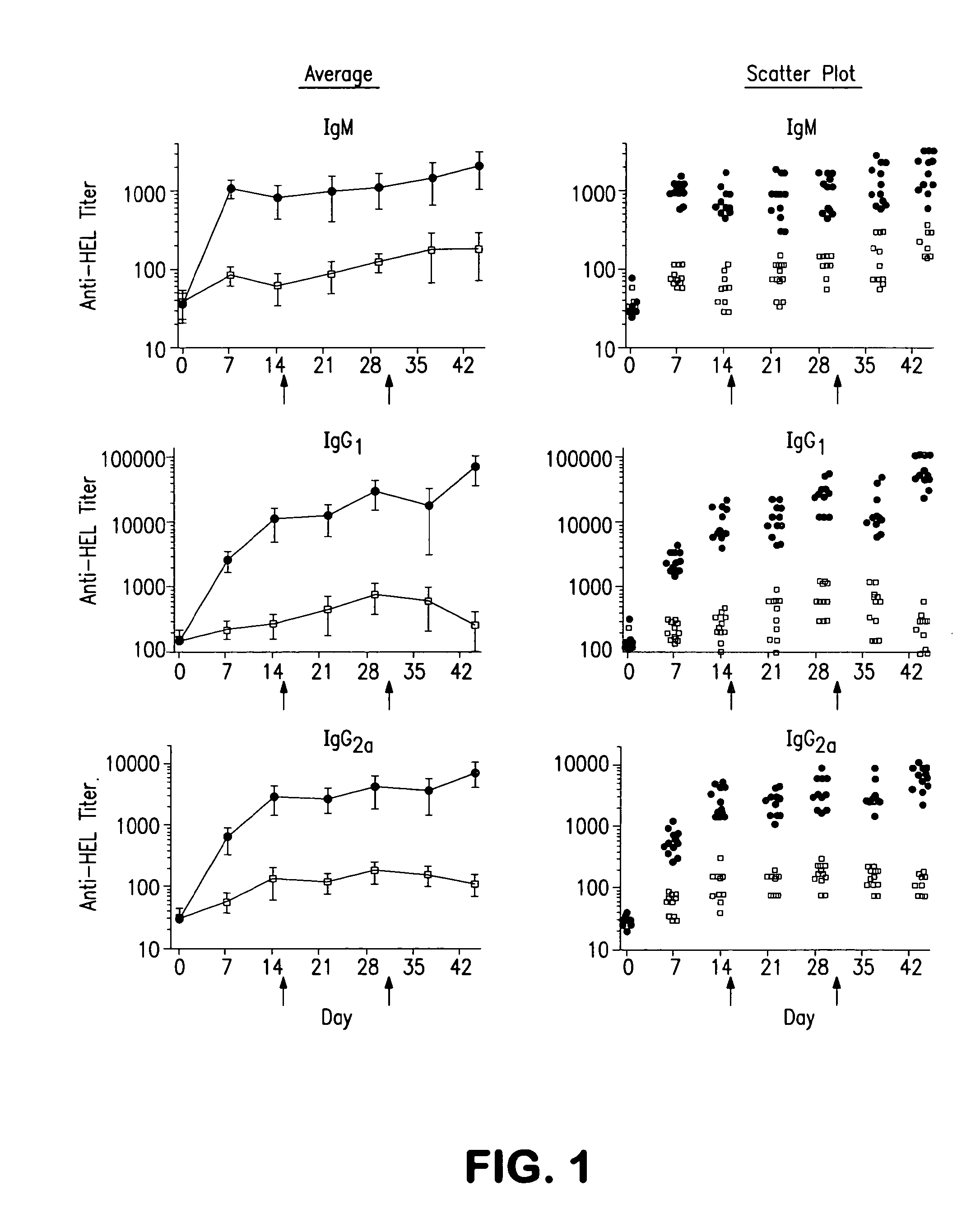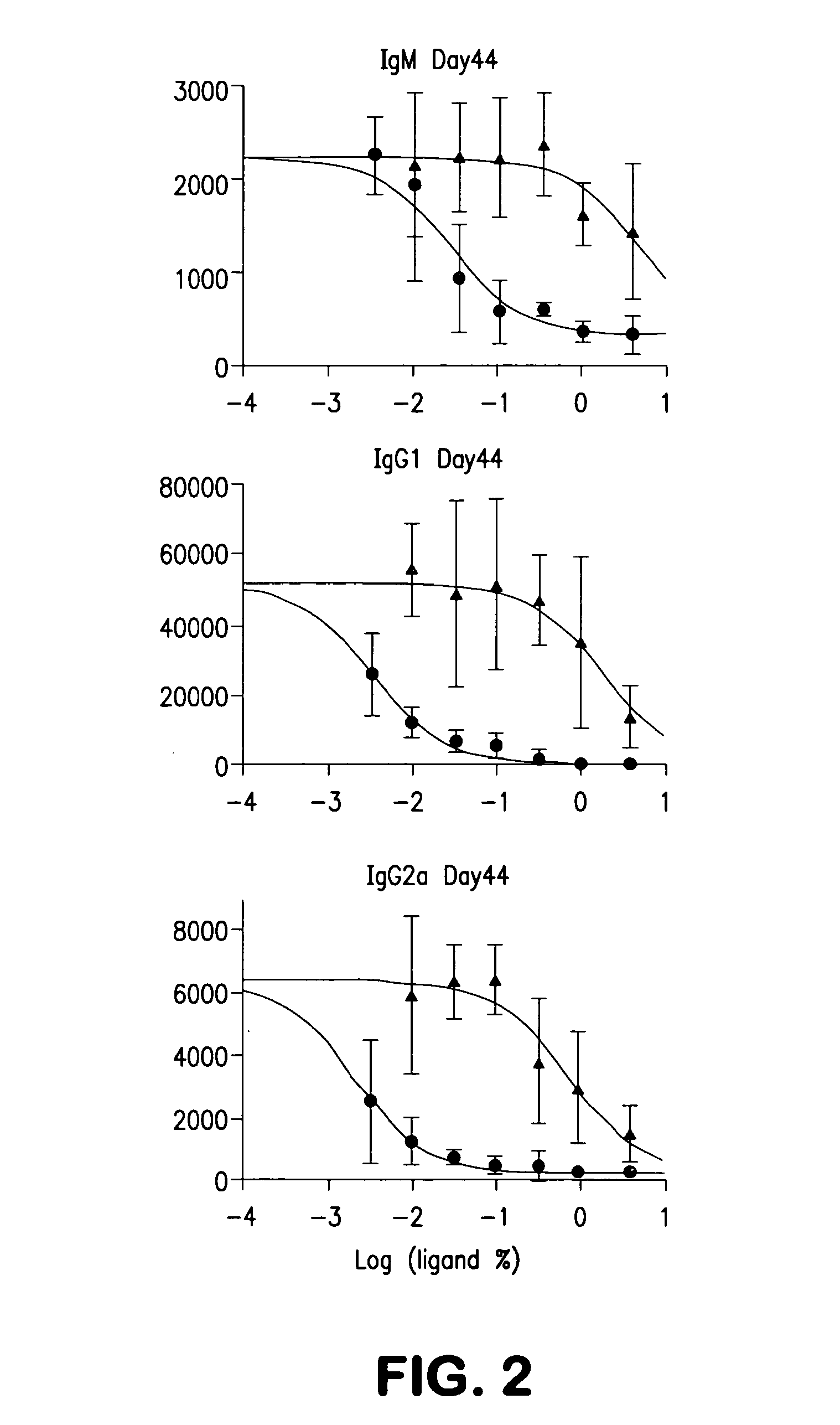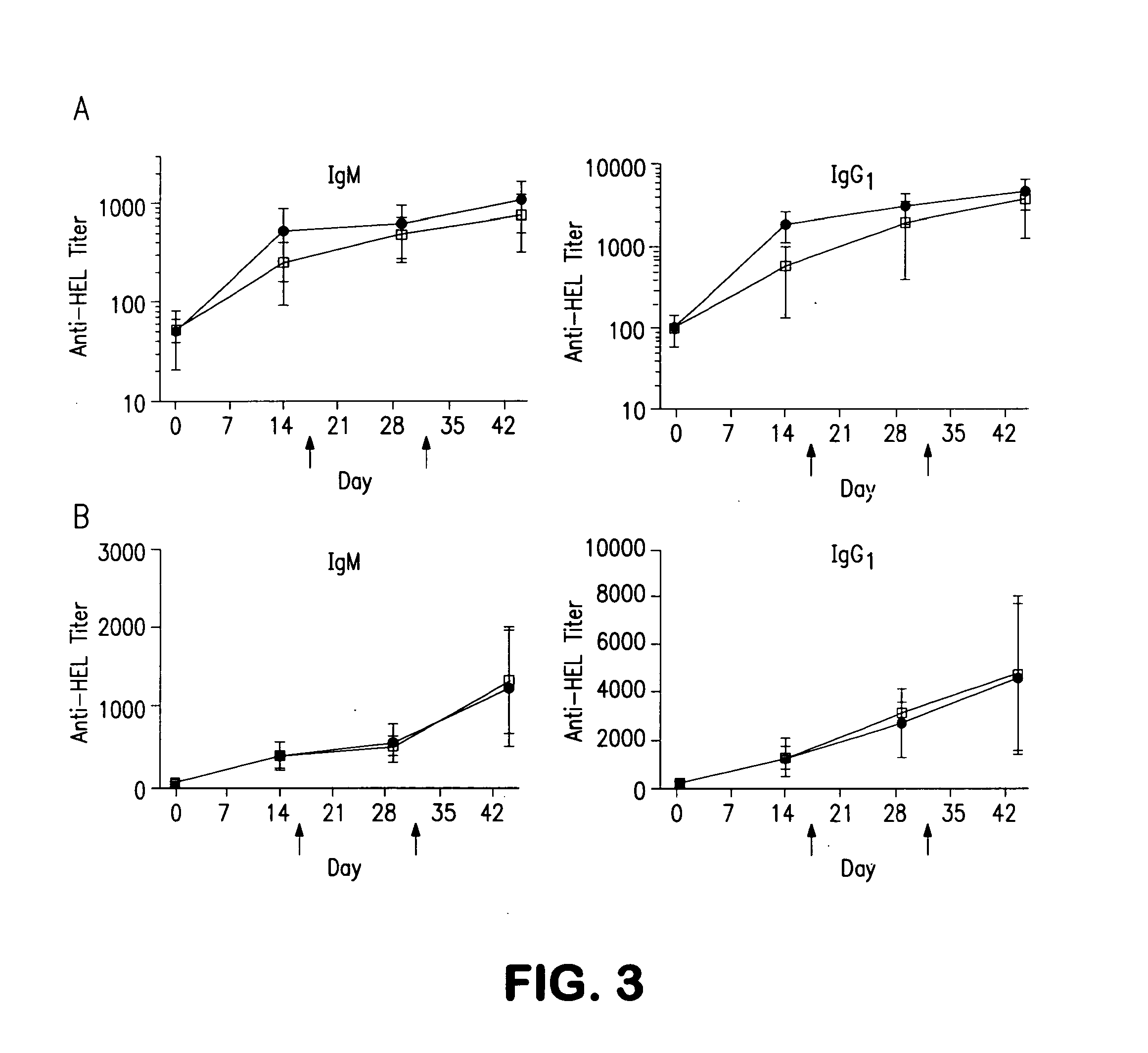Compositions and methods for inducing immune tolerance
a technology of immune tolerance and compositions, applied in the field of compositions and methods for inducing immune tolerance, can solve the problems of inflammatory responses leading to tissue destruction, damage or destruction of one's own tissues, and injurious processes, and achieve the effect of being more effective and safer
- Summary
- Abstract
- Description
- Claims
- Application Information
AI Technical Summary
Benefits of technology
Problems solved by technology
Method used
Image
Examples
examples
[0059]The following examples are offered to illustrate, but not to limit the present invention. The studies exemplified herein were all performed in accordance with procedures that have been previously described. See, e.g., Paulson et al., U.S. Patent Application Publication No. 20090238837; Duong et al., J. Exp. Med. 207:173, 2010; Chen et al., Blood 115:4778-86, 2010; and Reulen et al., Bioconjugate Chem., 21:860-866, 2010.
[0060]We examined whether liposomes displaying a synthetic glycan ligand of mouse CD22, BPANeuGc, and hen egg lysozyme (HEL) can induce tolerance to HEL in mice. The results are shown in FIG. 1. On day 0, 200 μL of liposomes (1.25 mM lipid) displaying HEL alone (filled circles) or BPANeuGc and HEL (open squares) were injected into C57BL / 6J mice (n=12 per group) via the lateral tail vein. On various days, the mice were bled and the anti-HEL titer (IgM, IgG1, and IgG2a isotypes) was determined by an ELISA assay. On days 15 and 30 of the experiment (indicated with ...
PUM
| Property | Measurement | Unit |
|---|---|---|
| size | aaaaa | aaaaa |
| size | aaaaa | aaaaa |
| compositions | aaaaa | aaaaa |
Abstract
Description
Claims
Application Information
 Login to View More
Login to View More - R&D
- Intellectual Property
- Life Sciences
- Materials
- Tech Scout
- Unparalleled Data Quality
- Higher Quality Content
- 60% Fewer Hallucinations
Browse by: Latest US Patents, China's latest patents, Technical Efficacy Thesaurus, Application Domain, Technology Topic, Popular Technical Reports.
© 2025 PatSnap. All rights reserved.Legal|Privacy policy|Modern Slavery Act Transparency Statement|Sitemap|About US| Contact US: help@patsnap.com



